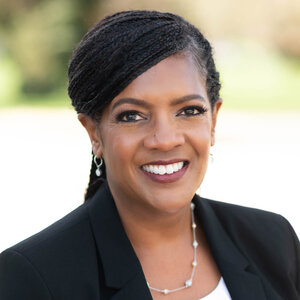We must prepare for climate catastrophes now to save lives later

This past August, the nation watched with horror as catastrophic wildfires—the deadliest in the United States in over a century—devastated the island of Maui. More than 100 people were killed and many are still unaccounted for. Families are displaced, homes and businesses are destroyed, and many buildings and critical infrastructure are wiped out.
We do not yet know what initially caused these wildfires, but we certainly understand that climate change was the primary driver behind the extreme and devastating weather conditions. Excessive dryness, flash droughts, and vicious winds caused by Hurricane Dora enabled the wildfires to spread rapidly and cause immense destruction.
The entire global community must face the sobering reality that extreme weather events ignited by climate change are our shared new normal: Canada, Greece, and Spain have experienced severe wildfires, while Mexico, Southern Europe, and the Southern U.S. have experienced long and powerful heat waves that scientists said would have been “virtually impossible” without human-caused climate change. In August, countries around the world set records for extreme heat.
Last year, millions of people were displaced because of calamities caused by climate change—and that number is certain to rise again this year. In the U.S., extreme heat has cost our economy billions of dollars in lost productivity, and the human toll includes lost lives, heat strokes, serious medical illnesses, and severe burns. This is what climate change looks like.
For over a decade, the humanitarian response organization I co-founded, Community Organized Relief Effort (CORE), has been on the front lines, responding to some of the worst natural and climate change-induced disasters. Our team worked with local partners following Hurricane Ida to provide urgent shelter solutions and essential resources to low-income and high-risk communities in New Orleans. And after Hurricane Ian, we mobilized a roof repair program to help underserved and elderly communities get back into their homes as quickly as possible in Florida.
All of these rapid-response efforts were critical to meeting the short-term needs of populations devastated by severe weather. But immediate efforts like these are only part of the story: The long-term costs associated with these catastrophic events—emotional, physical, and financial—are immense and will continue to grow as extreme weather events become more frequent, powerful, and destructive.
Climate change is not a problem we can solve easily, but we can—and must—begin immediately working to reduce its consequences and adapt for the future. From our efforts in emergency response, we know that one common factor saves lives and allows communities to bounce back more quickly from catastrophic weather events: preparedness and planning. An investment of $1 in proactive preparedness is worth $10 spent on reactive relief.
There is simply no excuse for not empowering communities—especially those facing the ravages of climate change—with the tools they need to prepare for and recover from disasters. For example, if we invest in backup generators for communities where power outages can result in exposure to life-threatening temperatures, we can avoid casualties and illness from extreme heat or cold. In addition, if governments prioritize community education, citizens can mobilize themselves during the inevitable gap between a disaster strike and aid arrival.
Our national leaders and those responsible for response agencies need to work with local governments to identify risk areas and engage community members to determine the specific threats to their neighborhoods. Households with the highest risk of flooding, fires, and other climate issues must be trained in disaster preparedness. Integrating community-based organizations into disaster plans with emergency management agencies can ensure community infrastructure like libraries, schools, and churches can swiftly transform into cooling centers, offering a safe haven for residents.
Community outreach and training programs, led by advocates representing diverse groups, are essential to educating residents about heat-related risks and safety measures. Families should be taught to create emergency plans, build kits with essentials like water and medications, and stay informed about weather forecasts. Outdoor workers should receive heat safety training, and neighbors should be encouraged to support one another by checking in on vulnerable individuals, sharing resources, and providing shelter.
By fostering collaboration and understanding, communities can ensure that everyone, regardless of their demographic, is equipped to handle extreme heat and its unique challenges. CORE is investing in several high-climate risk communities that intersect with high social vulnerability. We are clearing the property of brush, making homes less prone to fires, and training local communities on what to have in a go-bag and how to remain safe in disasters. These are simple and cost-effective things that can be done, but only a very small step.
More community infrastructure, such as planned resilience centers capable of safely hosting large numbers of displaced people, should be invested in these zones and areas. However, if our leaders don’t commit to doing the work to identify and implement the necessary steps, their plans for a more sustainable future will not mean much for those most in need.
The extent to which we as a society can preemptively empower communities before disaster strikes—especially those most at risk–will determine our ability to save lives in the future. We call on others who regularly respond to post-disasters to work with us in high-risk, vulnerable communities to invest in their preparedness and resilience.
Ann Lee is the CEO and co-founder of Community Organized Relief Effort (CORE).








Why climate philanthropy falls short, but I’m not giving up: A fundraiser’s perspective